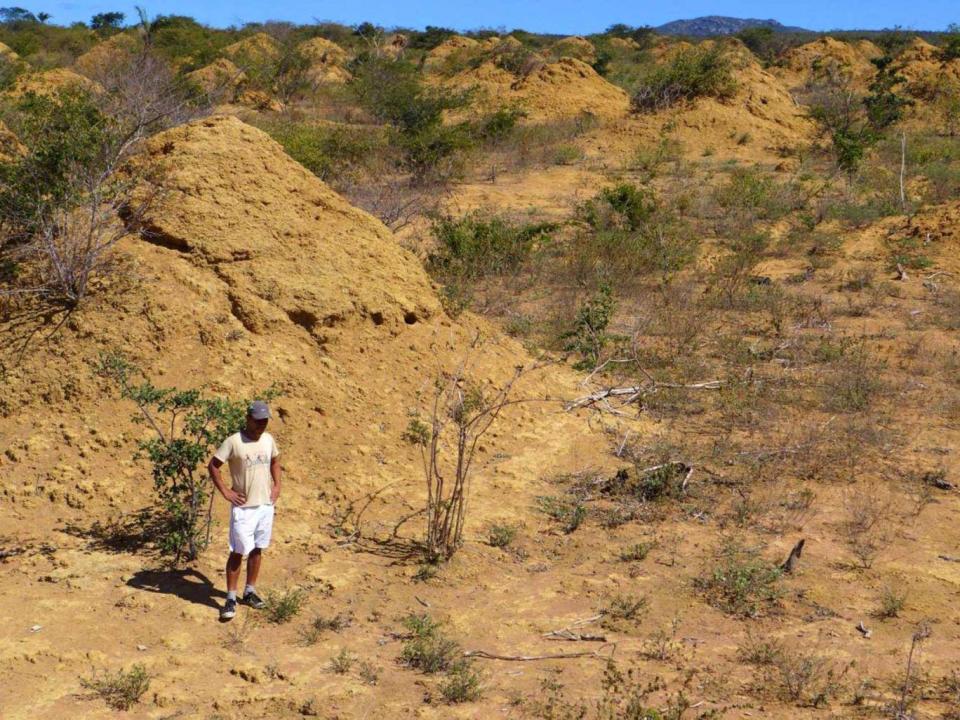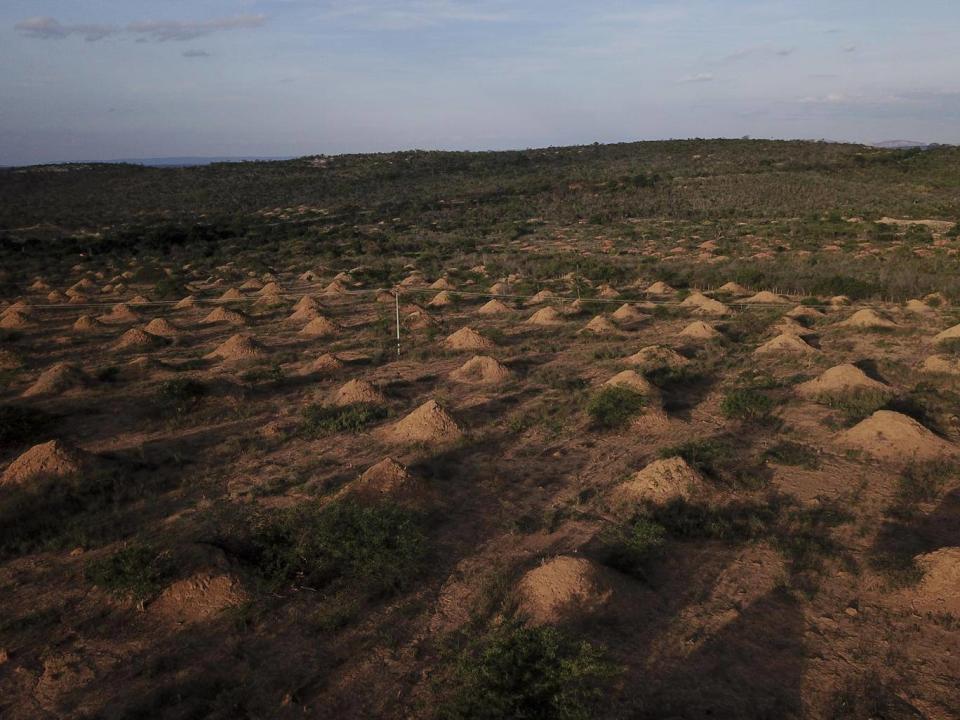Centuries-old termite ‘super-colony’ larger than any city discovered by researchers

Stephen J Martin noticed large mounds, some 10ft tall, 30ft wide, along the side of the road as he drove through a remote part of northeast Brazil.
“After 20 minutes, we were still driving through these, and I started saying, ‘Well, what are they?’” says Martin, an entomologist at the University of Salford who was in Brazil for research on the worldwide decline of honeybees.
He thought they might be piles of dirt displaced from the construction of the road. Instead, his companions told him, “Oh, they’re just termite mounds.”
“And I went, ‘You’re really sure about that?’” Martin recalls. “And they’re like: ‘Well, I don’t know. I think so.’”
On a subsequent trip, Martin met by chance Roy R Funch, an ecologist at Brazil’s State University of Feira de Santana who was already arranging to conduct radioactive dating to determine the age of the mounds.
“I said, ‘Look at those. There must be thousands of these mounds,’” Martin says. “And he went, ‘Nah, there’s millions.’”
Funch undercounted, too.

In research published earlier this month in the journal Current Biology, Martin, Funch and their colleagues reported the findings from years of investigations.
How many mounds? Some 200 million, the scientists estimate.
“They’re all over the place,” Funch says.
The cone-shape mounds are the work of Syntermes dirus, among the largest termite species at about half an inch long. The mounds, spaced on average about 60ft apart, are spread across an area as large as Britain.
“As humans, we have never built a city that big, anywhere,” Martin says.
The scientists were also surprised when they received results of the radioactive dating of 11 mounds. The youngest was about 690 years old. The oldest was at least 3,820 years old, close in age to the great pyramids of Giza in Egypt. “That just kind of blew me out of the water,” Funch says.
Martin says they used the minimum age suggested by the data, but the oldest mound could be more than twice as old.
The scientists also estimate that to build 200 million mounds, the termites had excavated 2.4 cubic miles of dirt – a volume equal to about 4,000 great pyramids of Giza. It is “the greatest known example of ecosystem engineering by a single insect species”, the scientists write.

Another surprise was that the mounds turned out to be just mounds.
Other termites build mounds with complicated networks of tunnels that provide ventilation for underground nests.
But cutting through some of the mounds, Funch and Martin found only a single central tube leading to the top, and they never came across any nests.
These mounds were not ventilation structures, but simply piles of dirt. As the termites excavated networks of tunnels below the landscape, they needed somewhere to discard the excavated dirt. So they carried the dirt up the central tube to the top of a mound and tossed it out.
That might also explain the regular spacing between the mounds. At first, Funch and Martin thought that to be the result of competing colonies. But when they put a termite from one mound next to one from a neighbouring mound, there was no conflict, indicating they were from the same family.
They concluded the pattern was simply an efficient spacing of garbage piles.
Young, active mounds grow to 4ft to 5ft tall in a couple of years, Funch says. Most of the older mounds appear inactive. The scientists do not know if that means the termites have left or if they simply have no need for additional digging in the area after constructing the needed tunnels.
While people living in the region knew of the termite mounds, few outsiders did. The expanse of the construction was hidden by scrubby forest known as caatinga.
“That’s why they were undiscovered for so long,” Funch says. “You cannot see them in the native vegetation. And not many scientists pass this way.”
For most of the year, with temperatures reaching 100 degrees Fahrenheit or hotter, the trees are scorched white. The landscape turns green after a short rainy season, and then the leaves fall, and the landscape grows desolate again.
As parts of the forest were cleared, the mounds became visible, and about a decade ago, Google Earth’s satellite images became sharp enough that Funch could spot individual mounds. He drove to some of the sites to verify that the mounds were there.
© New York Times

 Yahoo News
Yahoo News 